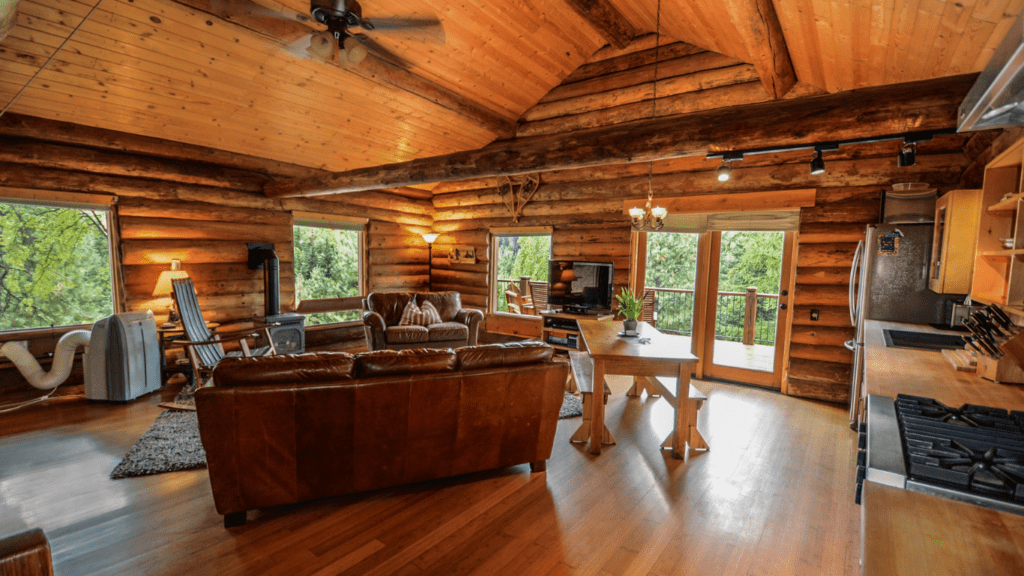Assess Your Needs and Budget
Understanding what to renovate and how much to spend starts here. Begin by identifying which areas need immediate attention. For example, a leaky roof or broken windows take precedence over aesthetic upgrades. List these items and then categorize them based on urgency.
Next, set a clear budget. Allocate specific amounts to different tasks while leaving a contingency fund of about 10-15% for unexpected expenses. Research current material and labor costs from various sources to get accurate estimates.
Consider cost-effective alternatives for materials. Use reclaimed wood for flooring or repurpose old furniture. Websites like Habitat for Humanity’s ReStores offer budget-friendly options that don’t sacrifice quality.
Utilize free online tools or apps to track expenses and stay within budget. Apps like Mint and You Need a Budget (YNAB) help monitor spending and adjust plans in real time.
Finally, match your renovation goals with your DIY skills. If tiling a bathroom feels daunting, start with simpler projects like painting or minor repairs. Completing smaller, manageable tasks can build confidence for more complex renovations.
Choose Cost-Effective Materials
Choosing cost-effective materials can significantly reduce renovation expenses. Focus on alternatives and look for discounts or sales to get the most value.
Exploring Alternatives
Exploring alternatives to traditional materials helps save money. Instead of hardwood, consider laminate flooring, which mimics wood but is cheaper. Use reclaimed wood for projects; it’s eco-friendly and affordable. Paint can transform rooms more economically than wallpaper. Concrete countertops can replace pricier granite or marble, offering durability at a lower cost.
Finding Discounts and Sales
Finding discounts and sales on quality materials makes a big difference. Monitor home improvement stores like Home Depot or Lowe’s for seasonal sales. Check clearance sections for overstocked items. Online marketplaces like Craigslist and Facebook Marketplace often have discounted materials. Subscribe to retailer newsletters for exclusive deals. Utilizing these resources ensures access to affordable, high-quality materials.
Prioritize Energy Efficiency

Improving energy efficiency during renovations saves money in the long run. This approach provides more value compared to purely aesthetic changes.
Insulation
Updating insulation in walls, attics, and basements can lower heating and cooling costs significantly. The Department of Energy states that homeowners can save up to 15% on heating and cooling bills by sealing leaks and adding insulation. I recommend using spray foam or batt insulation. Spray foam offers comprehensive coverage, while batt insulation is typically easier for DIY installations. Evaluate the insulation R-value, which measures heat resistance, to ensure it’s suitable for your climate. Proper insulation ensures less energy is wasted, enhancing indoor comfort.
Energy-Efficient Appliances
- Switching to energy-efficient appliances reduces electricity usage and lowers utility bills. Look for the ENERGY STAR® label when selecting appliances.
- The Environmental Protection Agency (EPA) notes that ENERGY STAR® products can save families around $500 per year on energy costs.
- Replacing old kitchen appliances, such as refrigerators and dishwashers, with high-efficiency models.
- LED lighting, which uses up to 75% less energy than incandescent bulbs, is also a good investment.
- Energy-efficient appliances are not only good for your wallet but also reduce your household’s carbon footprint.
Incorporating these steps focuses home renovations on sustainability and long-term savings.
DIY Vs. Professional Help
Choosing between DIY and professional help can impact your renovation’s cost and outcome. Understanding when to tackle tasks yourself and when to call in experts is crucial.
When to DIY
DIY works best for tasks involving basic skills or minor updates. Painting walls, installing shelves, and assembling furniture are ideal DIY projects. These tasks require minimal tools and can be completed over weekends. Additionally, simple plumbing repairs like fixing leaks or replacing faucets can save money if you have some basic knowledge.
When to Hire a Professional
Professional help’s essential for complex projects that require specialized skills. Electrical work, major plumbing installations, and structural changes fall into this category. Incorrectly handling these can lead to safety hazards and costly repairs. Certified tradespeople ensure tasks follow building codes and standards. For instance, rewiring a house or installing a new HVAC system typically necessitates an expert.
Plan and Execute Strategically
Careful planning ensures a successful, cost-effective renovation. Proper execution transforms plans into reality while staying on budget.
Time Management
Managing time efficiently during renovations avoids delays and extra costs. I suggest creating a detailed timeline for each project phase, noting dependencies and estimating durations. For instance, coordinate painting tasks around other activities to avoid disruptions. Allocating buffer time for unforeseen issues prevents work from piling up.
Purchasing in Bulk
Buying materials in bulk often results in significant savings. For large projects, consider bulk purchasing items like:
- tiles
- paint
- lumber
Before buying, I research suppliers offering discounts for bulk orders. This practice lowers unit costs and ensures consistent material quality. For instance, purchasing ten gallons of paint at once is often cheaper than buying one gallon at a time.



 Betsylie Sheetsin – Home Renovation Expert
Betsylie Sheetsin serves as the Home Renovation Expert at Castle Shelf House, specializing in giving practical advice for both small and large-scale home improvements. With years of experience in construction and renovation, Betsylie understands the importance of blending durability with design. Her insights into home renovation projects, along with expert advice on the latest materials and techniques, empower homeowners to tackle even the most ambitious projects confidently.
Betsylie Sheetsin – Home Renovation Expert
Betsylie Sheetsin serves as the Home Renovation Expert at Castle Shelf House, specializing in giving practical advice for both small and large-scale home improvements. With years of experience in construction and renovation, Betsylie understands the importance of blending durability with design. Her insights into home renovation projects, along with expert advice on the latest materials and techniques, empower homeowners to tackle even the most ambitious projects confidently.
